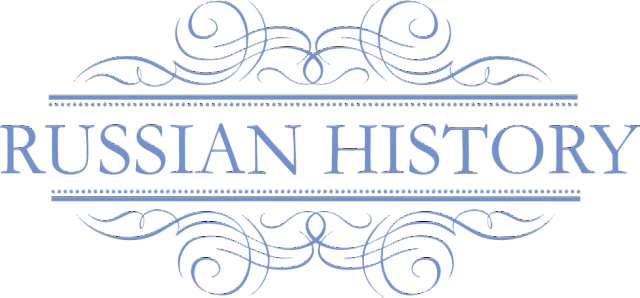15th Century
The 15th century began with Moscow and other Rus lands playing a second role to a powerful Lithuania, whose Grand Duke Vytautas was the most influential leader in the region. Moscow was then weakened further with a civil war which lasted on and off for several decades. The remainder of the century however saw Moscow re-emerge as its leader Ivan the Great united much of Rus under Moscow rule and finally threw off the Mongol-Tatar yoke.
Relations with Lithuania
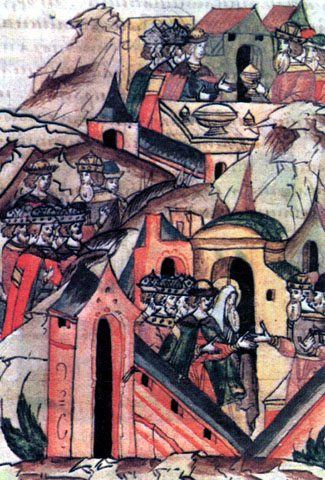
In 1392 Lithuania and Moscow entered into an alliance under which Grand Prince Vasily I of Moscow married the only daughter of Grand Duke Vytautas of Lithuania (known as Vitovt in Russian). In addition, the metropolitan in Moscow was Cyprian (Kiprian) who had previously served in Lithuania and was suspected by Dmitry Donskoy as being a servant of Lithuania. As a result Moscow found itself heavily influenced by Lithuania. In 1404 Vytautas completed his campaign against the Smolensk Grand Principality and fully incorporated it into Lithuania. Smolensk’s former prince Yury Svyatoslavich went to Vasily I bearing the gift of the Our Lady of Smolensk Icon and requested aid in returning his principality. This led to war between Moscow and Lithuania. Peace was only restored in 1408 and in the process Lithuania gained even greater influence over Novgorod and Pskov, while keeping Smolensk.
Reassertion of Tatar Supremacy
Since the end of the Timur-Tokhtamysh War, Grand Prince Vasily I of Moscow stop paying the Rus tribute to the Horde, which was now ruled by Khan Oluğ Möxämmäd (Ulugh Muhammad), but the real power lay with the military commander Edigey. Once Tokhtamysh had been killed in 1406 Edigey turned his attention to Rus and in 1408 he launched a campaign to punish Vasily I’s independence. Serpukhov, Vereya, Dmitrov, Klin, Gorodets, Nizhny Novgorod and Kolomna were sacked. Moscow was besieged for three days unable to take the kremlin. The siege ended when Moscow was forced to pay the Tatars a ransom to leave. On their retreat the Tatars razed the outskirts of the city and proceeded in bringing destruction to the Ryazan Principality. Edigey inflicted a clear demonstration of Moscow’s place as a vassal of the Golden Horde and Vasily I was forced to recommence the payment of tribute.
Moscow Civil War: Vasily II against Yuri of Zvenigorod and Galich
One reason that Moscow had managed to become powerful at the expense of other Rus principalities was because it had been spared any dynastical in-fighting between the Moscow branch of Ryurikid princes. However this harmony was threatened with the death of Vasily I in 1425. Vasily I was immediately succeeded by his son Vasily Vasilievich – Vasily II, however this was challenged by Vasily I’s brother Prince Yuri Dmitrievich of Zvenigorod and Galich who claimed that traditionally the throne passed to brothers before sons and Dmitry Donskoy himself had even declared this in his will (although it was written when Vasily I was still childless).
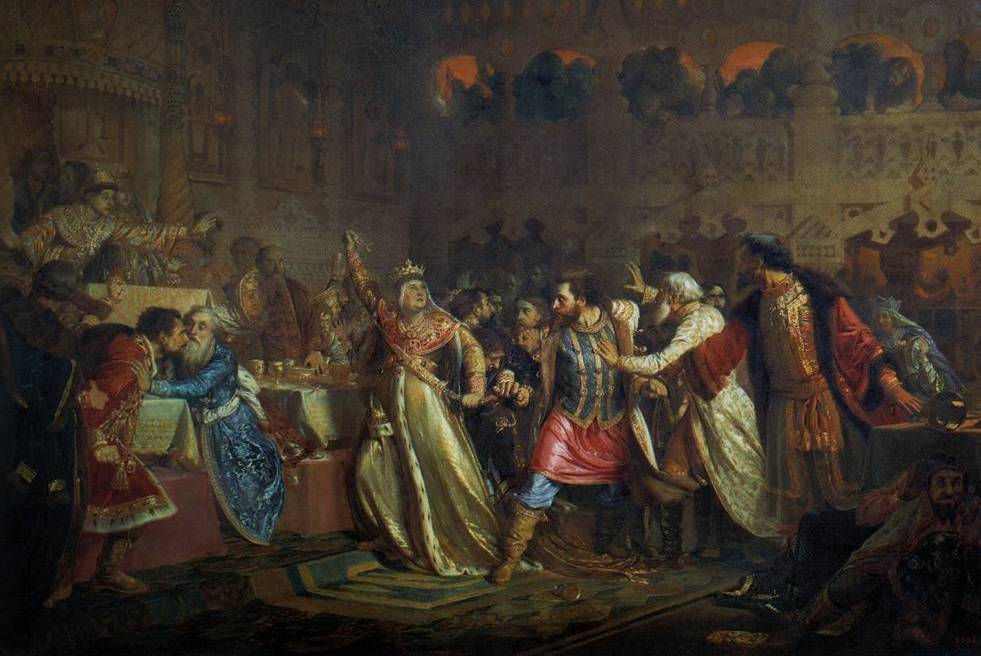
At first nephew and uncle decided to settle the issue by having it resolved by the khan. In 1431 Khan Oluğ Möxämmäd gave his support to Vasily II’s claims but also decided to transfer the city of Dmitrov to the realm of Yuri Dmitrievich. Despite securing the title of grand prince, Vasily was not content with being forced to give up Dmitrov and refused to hand over the city. The final straw came in 1433 when Vasily II’s mother publically humiliated Yuri’s son Vasily Kosoy at Vasily II’s wedding when she demanded he return a belt he was wearing which was allegedly part of the grand prince’s belongings. Vasily Kosoy returned to his father in Galich where they decided enough was enough and they prepared for war to restore their family honour and claim what they believed was rightfully theirs. Yuri and his two sons Vasily Kosoy and Dmitry Shemyaka marched on Moscow with forces from Galich. They quickly captured Moscow and Vasily II fled to Tver and then Kostroma.
Yuri subsequently made peace with his nephew and gave him Kolomna, but could not consolidate his status as grand prince. Influential boyars and officials began leaving Moscow for Vasily II’s court in Kolomna. Yuri’s fate was sealed when his own two sons also abandoned him and in 1433 he left Moscow allowing Vasily II to return as grand prince. Vasily II's later treatment of those who supported Yuri reignited the conflict. Firstly Yuri's sons fought against Vasily II and then, after Moscow troops sacked Galich, Yuri himself became involved and defeated Vasily II's troops outside Rostov. Yuri once again became grand prince in 1434 and ruled up until his death (possibly as a result of poisoning) several months later, leaving the throne to his son Vasily Kosoy.
Moscow Civil War: Vasily II against Vasily Kosoy
Vasily Kosoy's younger brothers Dmitri Shemyaka and Dmitry Krasny did not support his claim to be grand prince and allied themselves with Vasily II and received from him Uglich and Galich respectively as part of the alliance. The three princes marched on Vasily Kosoy in Moscow who fled with the treasury to Novgorod, then Kostroma where he organised an army to march on Moscow. He was eventually defeated outside Yaroslavl but managed to flee to Vologa where he raised another army and marched on Rostov. After the subsequent battle in 1436 Vasily Kosoy was captured and blinded earning the name Kosoy meaning the 'Squint-Eyed'.
Break Up of the Golden Horde
It was not just Moscow which was experiencing internal strife during the first half of the 15th century. All was not well in the Horde as rival factions constantly fought each other of the title of khan. A decisive blow came in 1437 when Khan Oluğ Möxämmäd was overthrown by Sayid Ahmad. Oluğ Möxämmäd and his supporters fled east to Kazan where he founded the Kazan Khanate in the remnants of what had once been Volga Bulgaria. Oluğ Möxämmäd's lead was followed in approximately 1441 when warlord Haci Giray established the Crimean Khanate with himself as khan in Bakhchisarai and then again in the 1460s when Mahmud established the Astrakhan Khanate. Finally in the late 15th century Taibuga established the Siberian Khanate centre around modern-day Tyumen. What was left of the Golden Horde ruled by Ahmad and centred around Sarai become known as the Great Horde.
Khan Oluğ Möxämmäd wasted no time in demonstrating the reach of his new khanate and launched several campaigns against Moscow from Kazan from 1439 onwards hoping to capture Nizhny Novgorod. In 1444 the khan's troops took Nizhny Novgorod and Murom, but Vasily II was able to liberate the cities in the same year. In 1445 Oluğ sent his sons against Vasily II who organised a counter campaign which met the Tatars outside the Spaso-Yevfimiev Monastery in Suzdal. Vasily II was taken prisoner and only released after a massive ransom was paid by Moscow.
Moscow Civil War: Vasily II against Dmitry Shemyaka
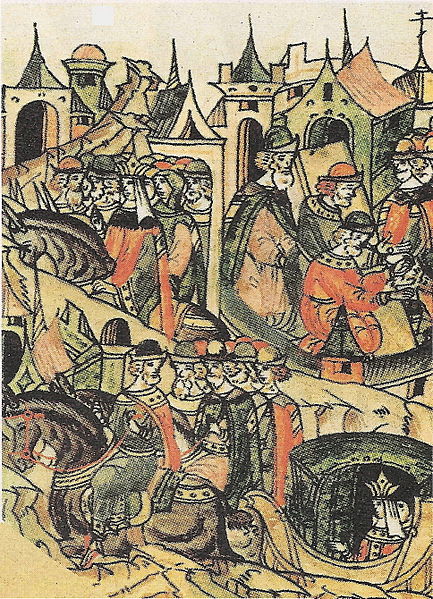
The defeat of Vasily II at the hands of the Tatars significantly decreased his authority and led to him being overthrown in favour of Dmitri Shemyaka in 1446. Vasily II was imprisoned at the Troitse-Sergieva Lavra in Sergiev Posad where he was blinded earning him the sobriquet ‘Tyomny’ - the Blind. From Sergiev Posad he was sent onwards to Uglich and Vologda. As had happened before though, boyars and various regional princes began shifting their allegiance from Dmitry to Vasily II. In 1447 when Dmitry Shemyaka was out of the capital Vasily II at the head of an army re-entered Moscow as grand prince. Dmitry Shemyaka was later defeated outside Galich and then Veliky Ustyug. In 1452 he fled to Novgorod where he died marking the end of the period known as the Moscow Civil War or the Great Feudal War.
Independence of the Russian Orthodox Church
In 1441 Metropolitan Isidore of Kiev and All Rus, himself a Greek, returned to Moscow after participating at the Council of Florence where he supported the reunification of the Orthodox and Catholic churches. This decision proved intensively controversial in Moscow and when Isidore then introduced Latin elements and blessed the Pope during the service in the Dormition Cathedral in Moscow's Kremlin it proved too much. Isidore was arrested for heresy. The metropolitan throne remained empty for the next seven years. In 1448 a meeting of Russian bishops unanimously appointed Bishop Johan (Iona) of Ryazan and Murom as the new metropolitan without consulting the patriarch of Constantinople, thereby establishing the de-facto independence of the Russian Orthodox Church. As a consequence in 1458 a separate metropolitan was elected in the Grand Duchy of Lithuania. Moscow's and Lithuania's metropolitans became known and the metropolitan of Moscow and All Rus and the metropolitan of Kiev, Halych and All Rus respectively
The Third Rome
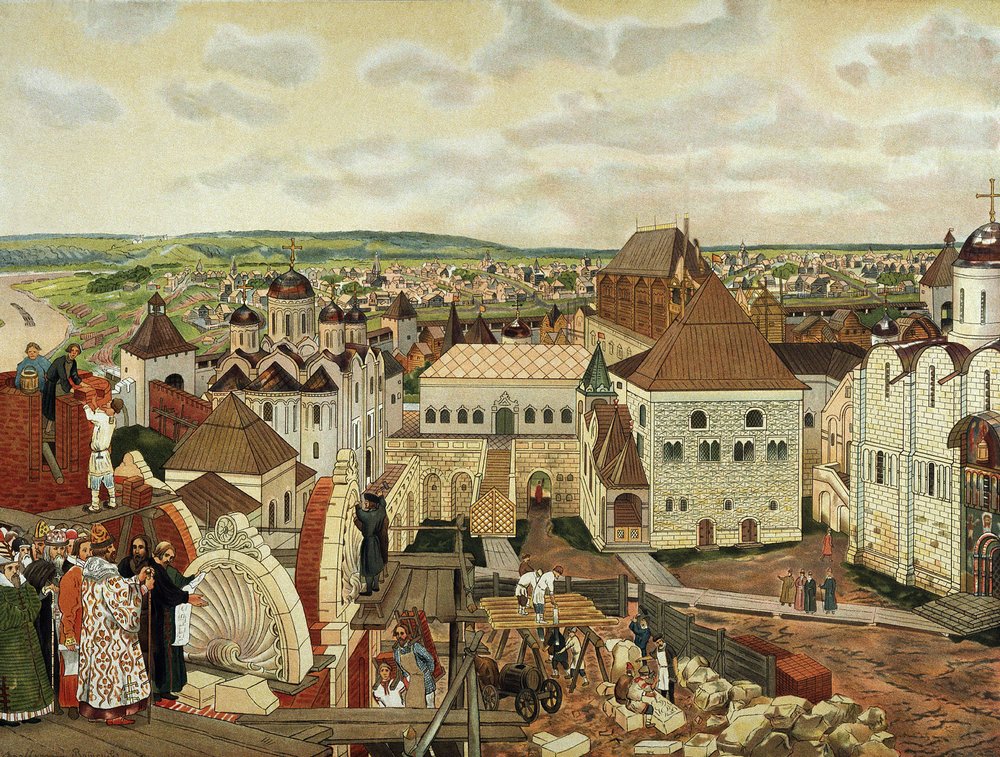
Grand Prince Vasily II died in 1462 and was succeeded by his son Ivan Vasilievich (Ivan III). Ivan III is also known in history as Ivan the Great. An important event during the reign of Ivan III which helped earn him the epithet 'The Great' was the creation of the concept of Moscow as the Third Rome. In 1472 Ivan III took Sofia Palaiologina as his second wife. Sofia was a Byzantine princess and niece to the last Byzantine Emperor. The marriage was actually suggested by the Pope with the hope of bringing Russia and the whole Orthodox Church under the influence of the Catholic Church. The Pope's plan of reconciliation drastically backfired. Instead Ivan III began to see himself as the legitimate heir of the Byzantine emperor and he adopted the imperial double-headed eagle which still appears on Russia's coat of arms. In addition Moscow was said to have become the Third Rome, following Rome which had lost the true Christian faith and became Catholic and Constantinople which had fallen to the Turks. Moscow now was the major city of the Orthodox faith and as such Ivan III ordered the building of the Dormition Cathedral in Moscow's Kremlin to recognise this new elated status.
Gathering of Rus Lands
As well as being Great, Ivan III is also known as the Gatherer of Rus Lands for his policies of bringing together various Rus principalities under the rule of Moscow. In 1463 the right to rule the Yaroslavl Principality was sold to Moscow under duress and passed to direct Moscow rule upon the death of its last independent prince in 1471. In 1472 Ivan III's brother died and his principality of Dmitrov passed back to Moscow, despite the opposition of Ivan's surviving younger brothers. In 1474 the Rostov Principality too became part of Moscow's realm.
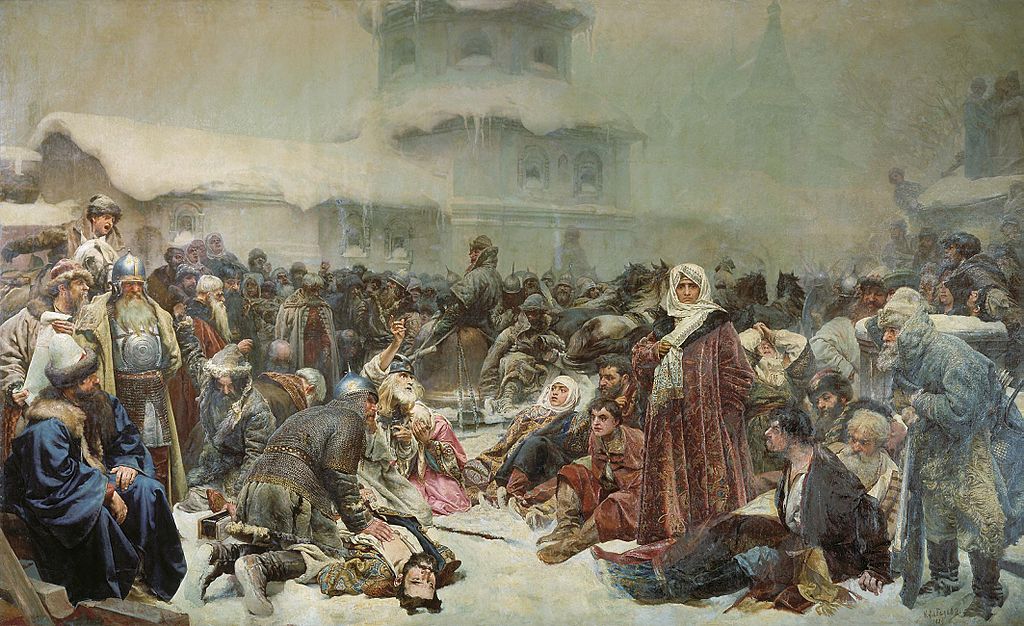
Ivan III's next target was the unruly Novgorod Republic. Novgorod's government, known as the veche, consisted of pro-Lithuanian and pro-Moscow parties and Ivan III became concerned by the republic increasingly becoming closer to Lithuania. To combat this Ivan III led campaigns against Novgorod in 1470 and defeated Novgorodian armies twice in 1471, establishing a strong Muscovite influence over the republic and securing a promise that it would not enter into alliances with Lithuania. By 1477 Novgorod was again looking towards Lithuania under the leadership of the widow Marfa Boretskaya and the final straw came when Ivan III was referred to in public by Novgorodian envoys as 'gospodin' (sir/master) and not 'gosudar' (sovereign). Ivan III sent his troops to Novgorod and the once great republic had no option but to surrender to Moscow's terms in 1478. The former Novgorod Republic was recognised as part of Moscow and many nobles from the city were exiled to various parts of Rus. Marfa Boretskaya ended her days as a nun in a monastery in Nizhny Novgorod. Even the bell which summoned meetings of the Novgorod veche meetings was not spared and was taken to Moscow. Lord Novgorod the Great had been subdued once and for all.
Following the victory over Novgorod, Moscow went on to absorb the once mighty Tver Principality in 1485. The Ryazan Principality by this time was under Moscow's control as it was ruled by Ivan III's nephews who were guided by their mother Anna Vasilievna - Ivan III's sister. The principality was ultimately absorbed into Moscow in 1521.
Great Stand on the River Ugra
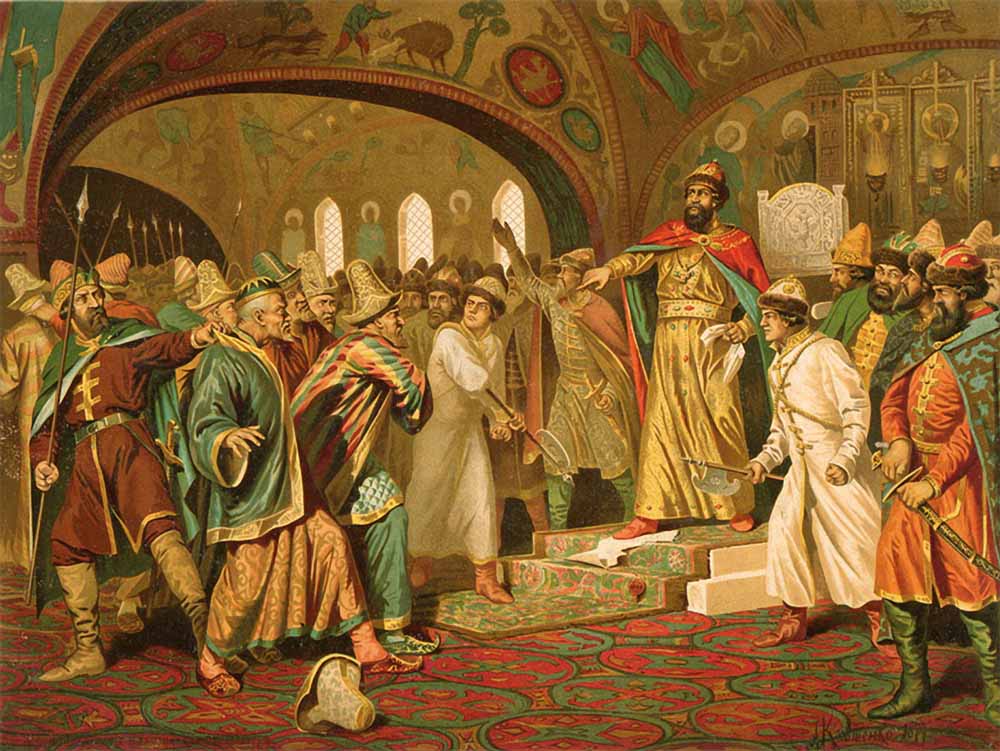
The third major event which led to Ivan III's recognition of greatness is the final lifting of the Mongol-Tatar Yoke. The almost quarter of a millennium rule of the Tatars over Russian principalities came to a somewhat anticlimactic end in 1480 at the aptly named Great Standoff on the River Ugra. Ivan III had refused to pay the standard tribute to the already weakened Tatars of the Great Horde. As a result a campaign was launched against Moscow to reasserts Tatar supremacy.
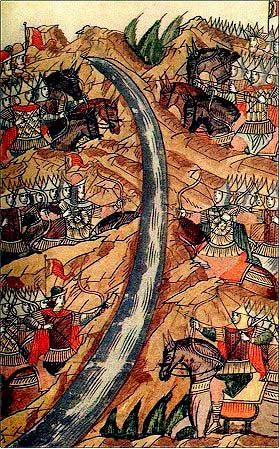
The Tatar army reached the River Ugra and then waited for expected reinforcements from Lithuania. However the Lithuanians never arrived after being occupied with internal affairs and an invasion by the Crimean Tatars – allies of Moscow. In the meanwhile Ivan III was able to gather a large army and the Tatars watched with increasing nerves as Russian troops gathered in number on the other side of the river. Eventually, with no sign of their Lithuanian allies and a substantial Russian army in waiting, the Tatars upped and left without battle. Ivan III and his army returned to Moscow in triumph. Despite there being no actual defeat or even a battle, Russians realised that it was finally no longer a vassal state of the Tatars, but an independent country able to follow its own destiny.
Relations with Livonia and Sweden

Moscow’s annexation of the Novgorod Republic brought it into direct contact with its new neighbours of Sweden and the Livonian Confederation (located in modern-day Latvia and Estonia). In 1480 the Livonians began besieging Pskov (still a semi-independent republic) and the Rus troops which came to Pskov’s rescue managed to take the battle into Livonian land in the following year. A peace treaty was eventually signed and Ivan III used the opportunity to strengthen Rus defences mainly with the construction of the imposing Ivangorod Fortress in 1492 opposite to the Livonian fortress known as Hermann Castle.
Relations with Lithuania
Rus relations with Lithuania considerably worsened at the end of the 15th century primarily due to the three main reasons: the flight of several Lithuanian nobles to Ivan III's court, Moscow's alliance with the Crimean Tatars who frequently raided Lithuanian lands and territorial disputes between Moscow and Lithuania for various cities on the border of the two countries. Following the death of King Kazimierz IV of Poland in 1492 and the subsequent separation of the Polish and Lithuania thrones, Ivan III saw his chance to regain territory lost to Lithuania in the beginning of the century. The speed of Ivan III's victories forced Grand Duke Aleksandras of Lithuania to enter into peace talks which proved unsuccessful. Peace was only reached in 1494 according to which Lithuania ceded the captured territory around the upper parts of the River Oka, including the strategic city of Vyazma, to Moscow and Aleksandras married Ivan III's daughter Yelena.

